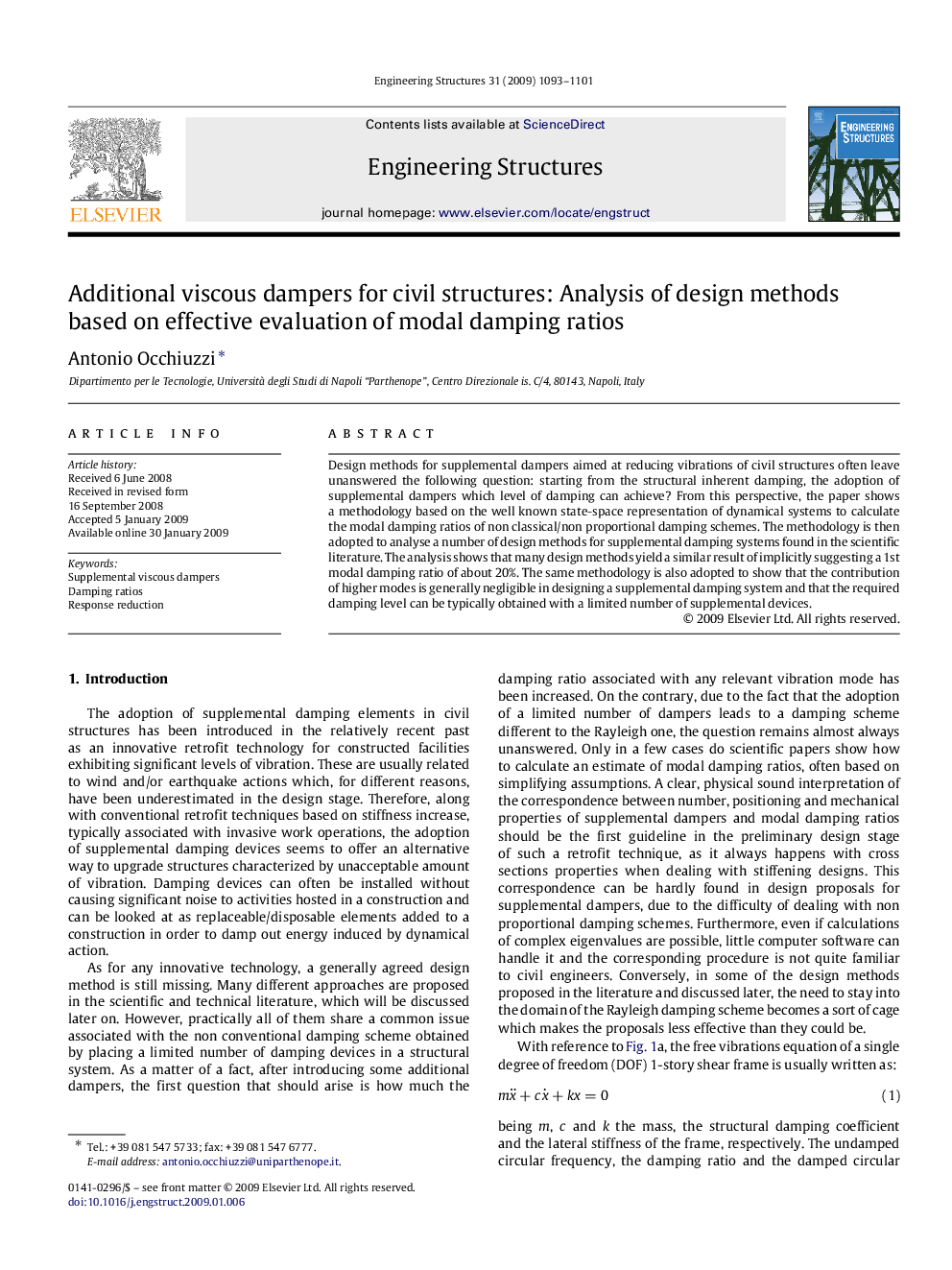| Article ID | Journal | Published Year | Pages | File Type |
|---|---|---|---|---|
| 268315 | Engineering Structures | 2009 | 9 Pages |
Design methods for supplemental dampers aimed at reducing vibrations of civil structures often leave unanswered the following question: starting from the structural inherent damping, the adoption of supplemental dampers which level of damping can achieve? From this perspective, the paper shows a methodology based on the well known state-space representation of dynamical systems to calculate the modal damping ratios of non classical/non proportional damping schemes. The methodology is then adopted to analyse a number of design methods for supplemental damping systems found in the scientific literature. The analysis shows that many design methods yield a similar result of implicitly suggesting a 1st modal damping ratio of about 20%. The same methodology is also adopted to show that the contribution of higher modes is generally negligible in designing a supplemental damping system and that the required damping level can be typically obtained with a limited number of supplemental devices.
